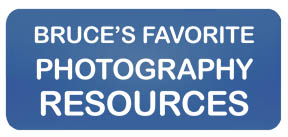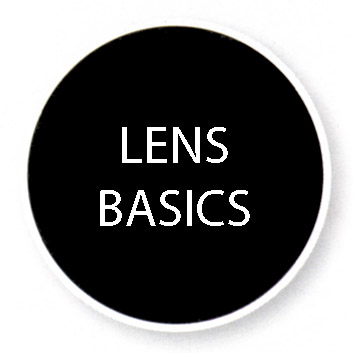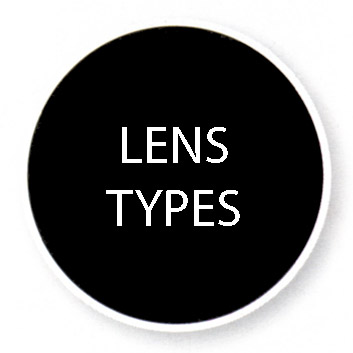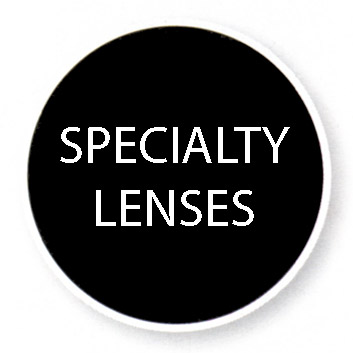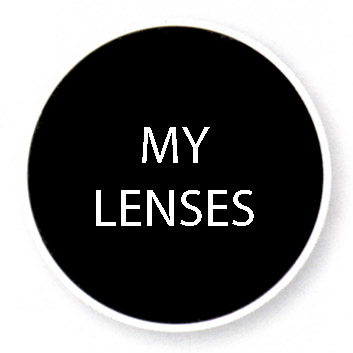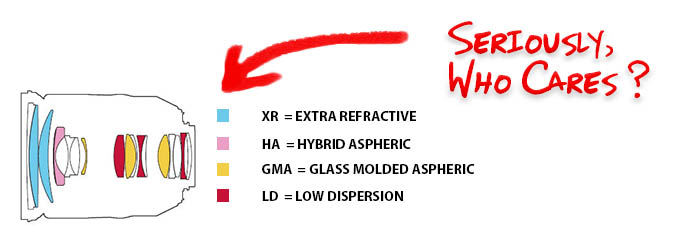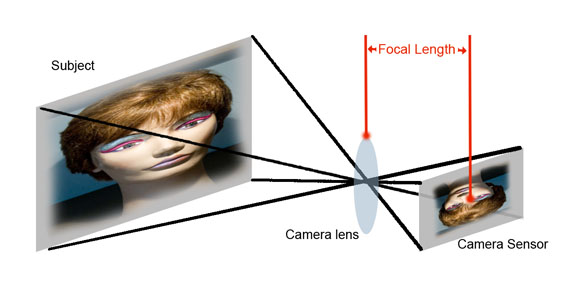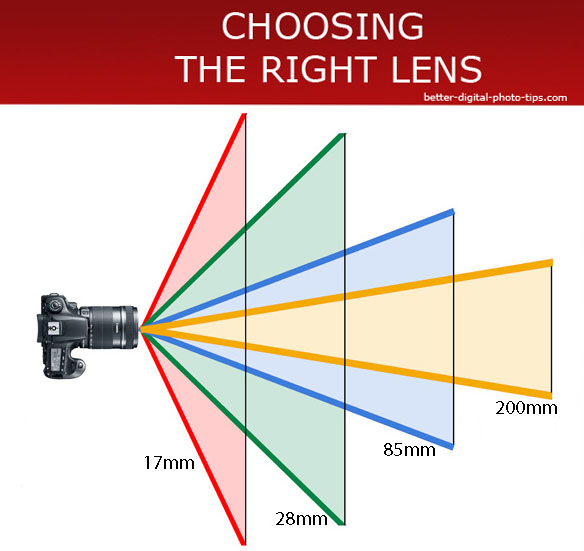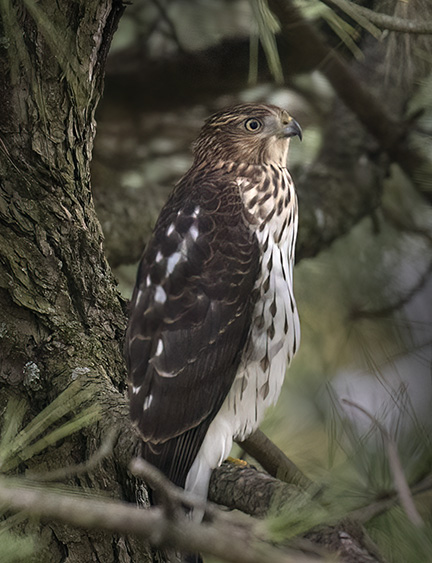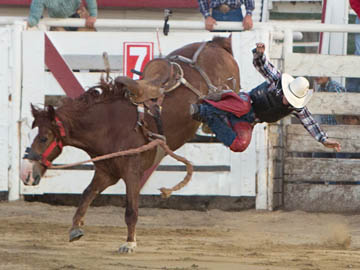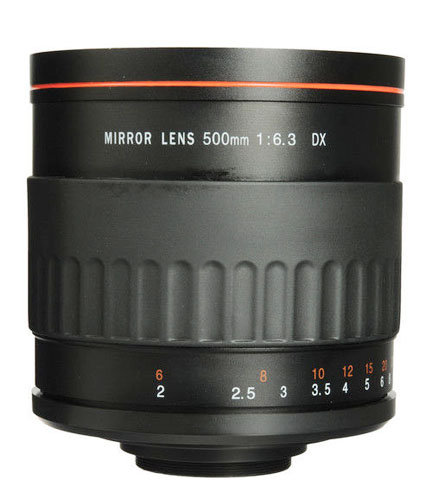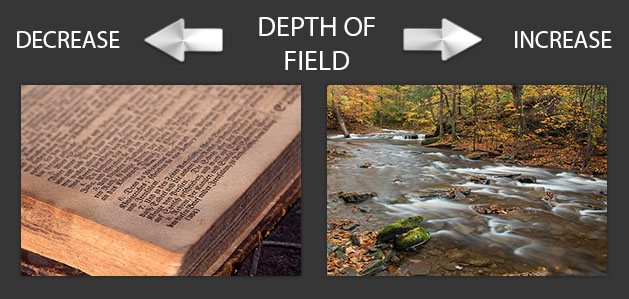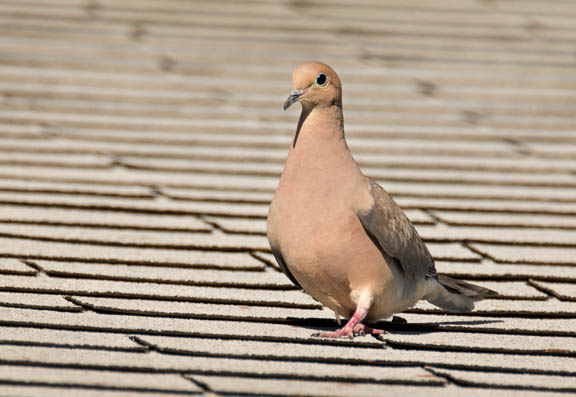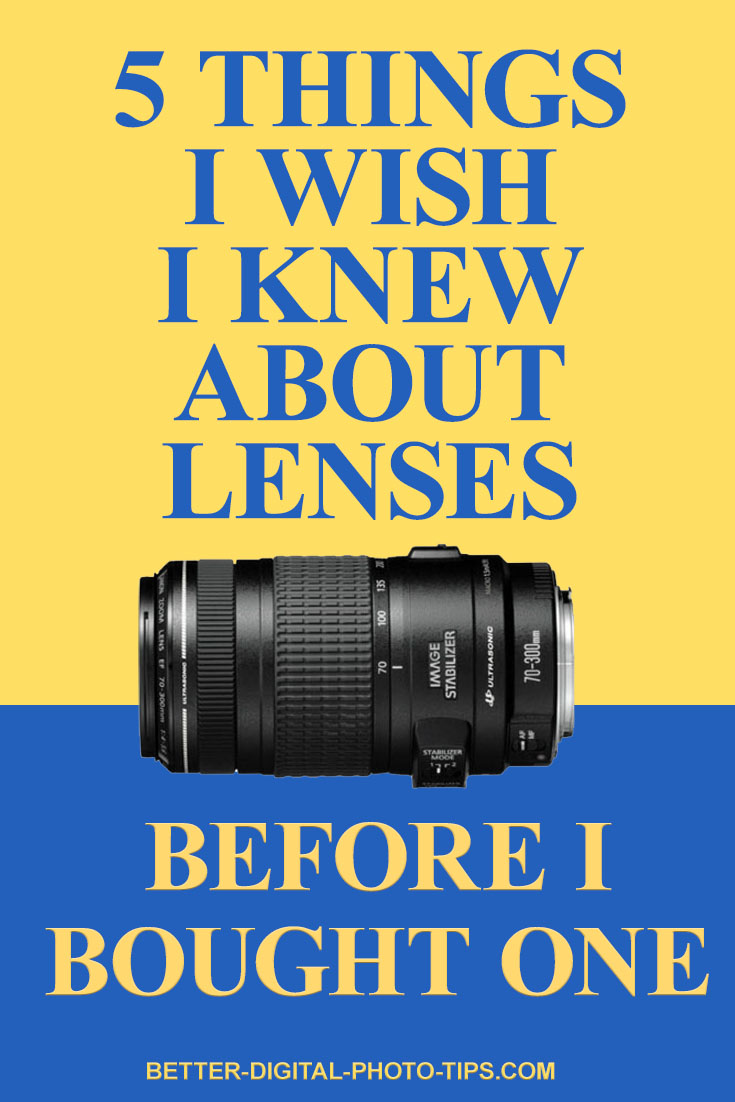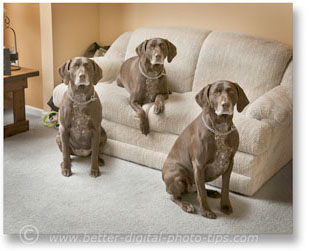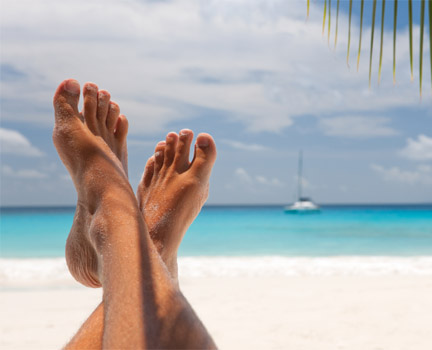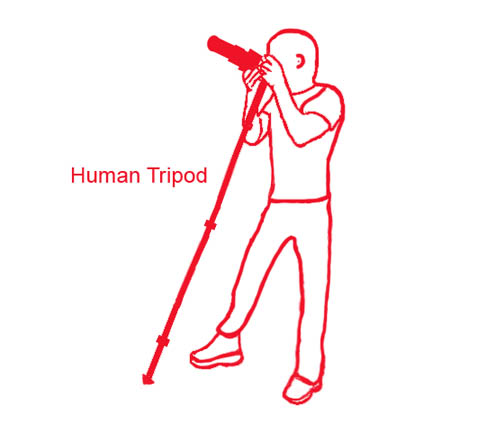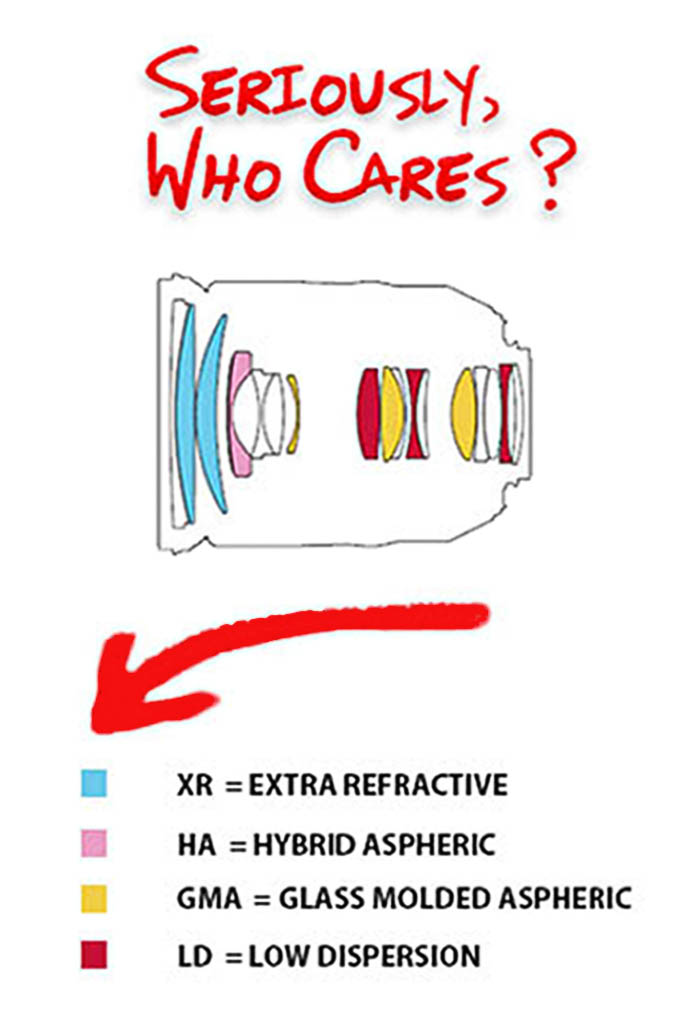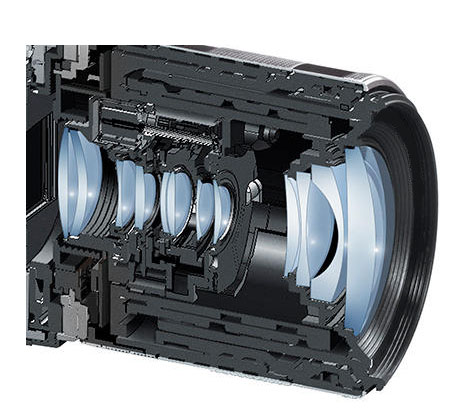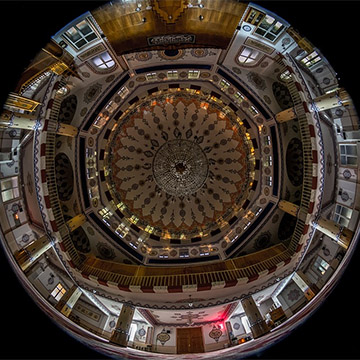HOW TO POSTS: LIGHTING AND COMPOSITION
camera lens basics
the only guide you'll ever need on lens types and specifications
WRITTEN BY: BRUCE LOVELACE
UPDATED: August 20, 2024
Seriously, how do you get a better understanding of camera lens basics? I'm sure you want to get a basic grasp of how to choose the right digital camera lens, but it's so dang confusing with all those lens numbers and letters to worry about.
Well you can relax now.
You're going to learn a few lens basics and it won't be painful at all.
It can get bewildering real fast, but here' the good news. You don't need to understand most of those fancy abbreviations anyway.
Certainly, it's good for you to know a few lens basics such as the different lens types, and just a few lens specifications.
After that, if you can learn just a little bit about specialty lenses, you'll have the knowledge to be confident in choosing the best digital camera lens for your situation.
Included in this article:
- What is a Fast Lens
- What is a Kit Lens
- Best Lens For Bird Photography
- Best Lens For Wildlife Photography
- Focal Length And Lens Comparison
- Good Depth of Field Lens
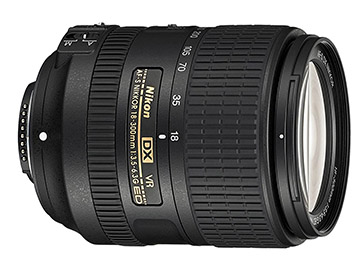
What the heck does 18-300mm f/3.5-6.3 G VR DX ED AF-S mean?
Updated for 2019, this guide on camera lenses will give you camera lens basics, do a comparison of lens focal lengths, cover the different types of lenses, as well as help you choose the right lens to use with different kinds of photography.
I'm going to simplify and explain what really matters most and tell you what you DON'T need to know about camera lenses too. Take a few minutes to read this article on lenses. If you're too rushed for time right now, come back later.
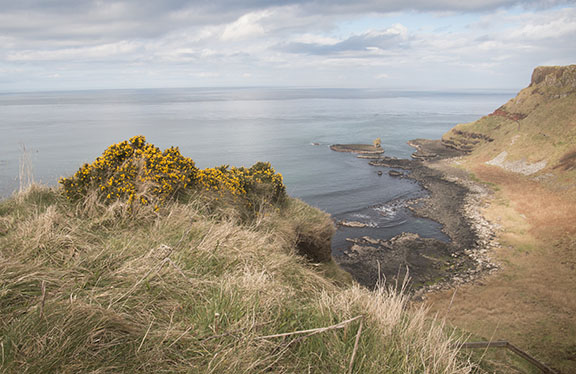 I knew I'd needed a digital camera lens with a real wide angle setting to include both the foreground and the background in this landscape photo. I used a Tamron 17-35mm zoom lens set at its widest setting of 17mm.
I knew I'd needed a digital camera lens with a real wide angle setting to include both the foreground and the background in this landscape photo. I used a Tamron 17-35mm zoom lens set at its widest setting of 17mm.Pour your favorite beverage, get comfortable, and plunge into the warm water. You've got 4 main sections on camera lens included in this basic digital camera lens guide followed by two additional sections, one on where to buy digital camera lenses, and the last section on the best accessories for those lenses.
What's included in this post on digital camera lenses?
I divided this article up into 4 main sections. Click on any one of the circles below to jump to that section first:
- Camera lenses explained with their basic features and specifications explained
- The various different lens types
- Specialty lenses
- My own collection of camera lenses (at least for now)
camera lens basics video
If you're like me, you like to learn by watching videos on digital photography too. Here's a video you can watch. I shot this video to add a second way for you to get a basic understanding of camera lenses. Let me know what you think of it.
First a basic understanding: what does a camera lens do
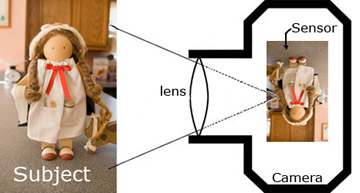
A digital camera lens has just two simple functions. It must let the right amount of light into the camera and it must focus the light onto the camera sensor. Sounds simple, right?
One or more of the lens elements move forward or backward during focusing until the light is sharply focused on the sensor. Just about every single lens and camera you can buy for your specific camera now has one or more autofocusing systems. Advanced cameras also give you the important ability to focus manually.
Your camera determines how long the shutter stays open and the aperture (represented by the f/stop number) is how big the opening is when the shutter is open.
 Size of lens opening is APERTURE and is called an "F-STOP."
Size of lens opening is APERTURE and is called an "F-STOP."Smaller numbers like f-2 and f-4 are larger lens openings and allow more light strike the camera sensors. Each lens design will have its own maximum aperture or biggest opening it's capable of.
All those confusing lens abbreviations
So you're probably wondering why the need for all of the abbreviations and specifications that are anointed to so many camera lenses. Well, even though the lens's job sounds simple, the actual design of digital camera lenses is quite complex. Camera lens companies like to sell us on the idea of how sophisticated their lens designs are so that we'll buy them.
The manufacturers add in all those letters to the name of the lens to impress us. Check out the Tamron camera lens below. So what does the SP, XR, Di, LD, and IF mean? And, why should you care? Let's dive right in.
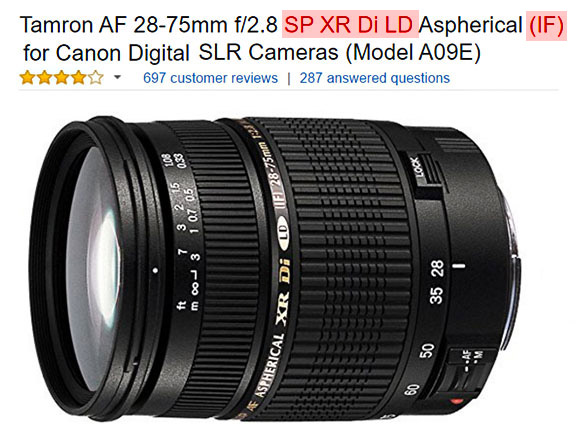 Confusing Lens Specification Abbreviations
Confusing Lens Specification AbbreviationsShockingly, the Tamron camera lens above actually has 16 different lens elements arranged into 14 separate groups within the lens barrel. Not only that, but lenses have different materials and processes used for making those lens elements. Look at all of these abbreviations in the name of the lens. It's no wonder we're all confused.
All of those different camera lens designs do dramatically affect how good your pictures come out. They are important, but it's not at all important for you and me to know what they are. Really! They're good to be familiar with but for me personally, I'm more interested in the practical stuff, like how well lenses give you the quality pictures you want. I'd rather know the zoom range, the lenses maximum f/stop, and what other photographers have experienced when using a given lens.
Come on man! When you look at an image can you tell me which one was taken with a lens that has 16 lens elements, including an XR, an HA, and 2 LD elements? I don't think so. Of course you want to know about image quality, but you really don't need to know all those lens design specifications. You can skip this section if you're like me and really don't need to know all this technical stuff.
digital camera lens specification abbreviations
Some of the abbreviations are commonly used with different lens manufacturers and some are used only by individual manufacturers for marketing purposes. For instance Tamron uses an SP designation as "Superior Performance" for its pricier high quality lenses for pro photographers.
Here are some of the basic digital camera lens abbreviations.
DI
Digitally integrated. This means the lens was specifically made for digital cameras. The light coming through a DI lens will strike the sensor at a 90 degree angle. Lenses that were made for film cameras don't perform the same way as digital camera lenses do for digital cameras.
IS
Image stabilization. Nikon calls it VR for vibration reduction. This feature allow you to shoot handheld without a tripod at slower shutter speeds without getting blurry photos.
LD
Low Dispersion. Glass that has a low dispersion index tend to give you less chromatic aberration. Chromatic aberration occurs when different colors focus at different distances and appear as bright color fringes on the edge of objects within your photo. There is also a lack of sharpness.
XR
Extra Refractive Index (XR) glass can bend light rays at steeper angles, thereby decreasing the physical length of the lens while enhancing imaging performance by minimizing optical aberrations.
IF
Internal Focusing. Internal focusing means the front filter ring won't rotate when your lens focuses. This helps you when you are using polarizing and graduated filters. It also means the length of your lens won't change when you're focusing either.
ASL
Aspherical Lens Elements. Give lenses longer zoom range capabilities with nearly eliminating spherical aberration and image distortion.
ZL
Zoom Lock. This basic camera lens feature locks your lens at a set length. Lenses can "creep" to a longer zoom setting when aimed downward from shooting towards the ground or when hanging around your neck with a neck strap.
USM
Ultra Sonic Motor. (Canon) USM focusing motors are quiet which is great for shooting video and any situation where noise from focusing would be disturbing. Canon's ring-type USM gives silent and very quick auto-focus.
STM
Stepper Motor Technology. (Canon) Same as the USM, but even smoother for the best quality video focusing.
UD
Ultra-low dispersion. It means that the refractive index of the lens material is lower than regular glass. It's the same as ED (see below) to reduce chromatic aberration.
HSM
Hyper Sonic Motor. (Sigma) Gives you fast, quiet and accurate autofocusing.
OS
Optical Stabilizer. (Sigma) This is simply Sigma's version of Canon's IS and Nikon's VR systems designed to cut down on image blur from camera shake in low light situations.
MORE SIGMA
SLD is Special Low Dispersion glass elements. ELD is Extraordinary Low Dispersion. FLD is F Low Dispersion. (I wonder what the "F" stands for.) TSC is Thermally Stable Composite.
ED
Extra-Low Dispersion. (Nikon) Glass elements designed minimize chromatic aberration and give you higher resolution and superior contrast.
understanding camera lens specifications
The three lens specifications that you do need to know are fairly straightforward. Here's the bottom line. These are the only camera lens specs that are the most important to follow when you're doing a lens comparison. This is what you want to know:
- The zoom range - for example: a lens that zooms from 25mm to 75mm has a 3x zoom range
- The maximum f/stop number - typically f/2 or f/2.8 for pro lenses and F/3.5-f/5.6 for "kit" lenses.
- What size lens that your camera needs - full frame like a 35mm SLR camera or the smaller APS-C size.
Okay, buckle your seatbelt. We'll cover these in backwards order. First, the right size. The camera lens basics chart below shows you the abbreviations that Nikon, Canon, Sigma and Tamron use for full-sized cameras vs. the smaller photo enthusiast level cameras.
Most point and shoot and pocket cameras don't have interchangeable lenses and therefore there is no need to classify the lenses by size. The chart below is for the 4 major DSLR camera lens makers. You can use a lens that is made for a full frame camera on a camera with a smaller sensor. The bigger lenses are just bigger and more expensive since they need more materials and larger glass elements to cover the area of a larger sensor.
3. digital camera lens basics: size abbreviations
When it comes to DSLR cameras, there are primarily two sizes of sensors and two sizes of lenses. Full-frame cameras and lenses are used primarily by pro photographers. The smaller sensored cameras are often referred to as APS-C. Here are the abbreviations for the lens sizes made by Canon, Nikon, Sigma, and Tamron for full-size and smaller sized DSLR cameras.
Camera
Size
Abbreviation
Canon
Canon
Full frame
APS-C
EF
EF-S
Nikon
Nikon
Full frame
APS-C
FX
DX
Sigma
Sigma
Full frame
APS-C
DG
DC
Tamron
Full frame
-
Tamron
APS-C
APS-C
Like I said before, you can always use a full-sized lens on a smaller sensor camera, especially if you already own it. Unless you're planning to get a full-sized DSLR in the future, it doesn't make much sense to buy the bigger, heavier, more expensive lens. It won't give you a better quality image.
2. maximum f/stop - largest aperture
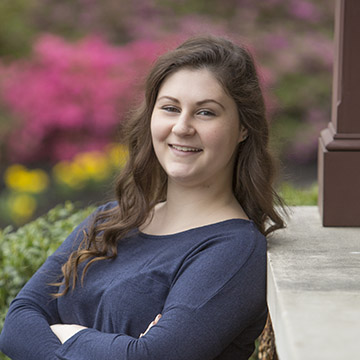 F/3.5 = Blurry Background
F/3.5 = Blurry BackgroundLenses with larger maximum apertures can let more light into the camera. That would be desirable is several situations. It's great for situations where you don't have a lot of light. You can use a faster shutter speed if you have a larger aperture. You be able to avoid the need for using a tripod or flash if you can get enough light with a large maximum aperture.
Large aperture also give you beautiful out of focus backgrounds for portraits. Large maximum apertures reduce the depth of field. Here's a simple video that shows you maximum aperture for a few specific lenses and why it may be important to you.
1. zoom range
Many beginning photographers are satisfied with whatever lens comes with their camera. Smaller DSLRs often come with a "kit" lens with a zoom ratio of around 3x, typically 18-55mm.
That gives you the equivalent view of about a 29 to 88 zoom lens on a full-frame camera, which covers a moderately wide angle to moderate telephoto angle of your subject.
If you're going to get just one lens, it makes much more sense to go with a lens that has a bigger zoom range, like 18-135mm or 18-300mm. True, these lenses are a little bit bigger, and a little bit more money, but they are so much more versatile.
18-55mm Zoom
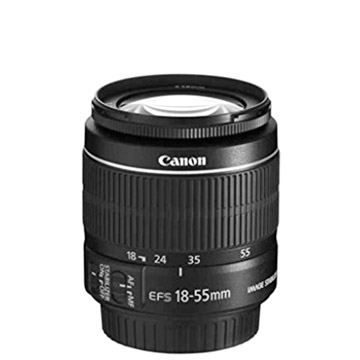 3x Zoom Range
3x Zoom Range18-135mm Zoom
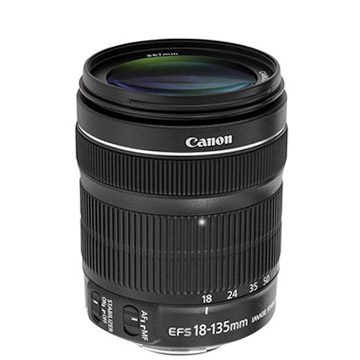 7.5x Zoom Range
7.5x Zoom Range18-200mm Zoom
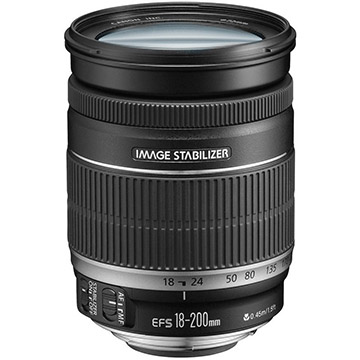 11x Zoom Range
11x Zoom Rangecamera lens types
There are so many camera lens types offered in the market that it can seem complicated. You just want to know which one you should use. You can describe lens types in 3 different ways:
- Focal length - such as wide angle, normal, and telephoto
- By how you use them - such as sports lens, bird lens, landscape, or portrait lens.
- By how they're designed - retrofocus, double gauss, or celor. You can skip this one!
You can divide lens types into categories based on focal length, based on what you use it for, or even based on its design features. Lens manufacturers often try to paint a picture of their lens as the best lens for a certain type of photography. That's why it's challenging to understand.
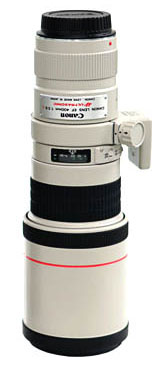 400mm
400mm"Prime" Lens
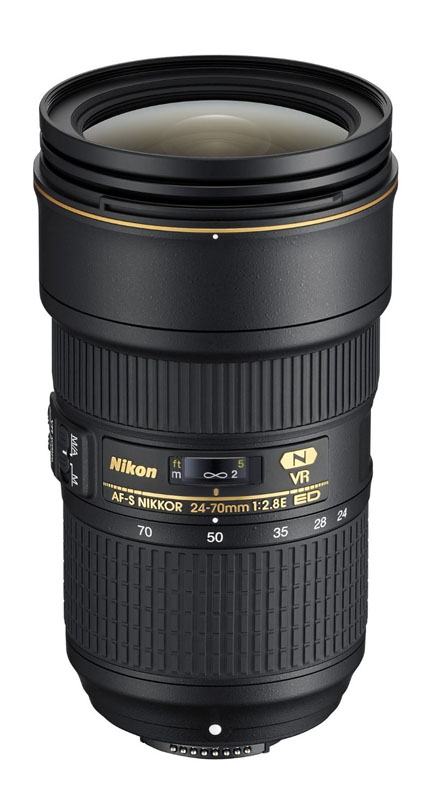 Standard 24-70
Standard 24-70Zoom Lens
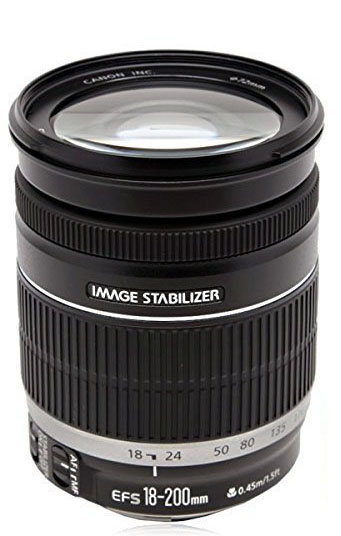 Super 18-200
Super 18-200Range Zoom
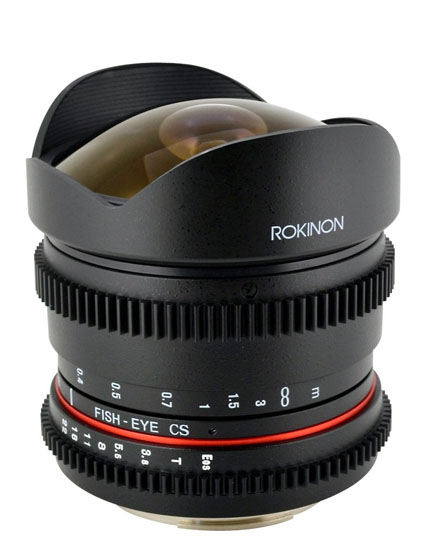 Super Wide Angle
Super Wide AngleFish-eye Lens
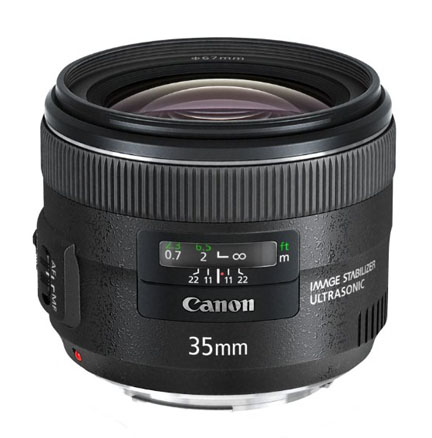 Prime Wide
Prime WideAngle Lens
1. LENS TYPES BASED ON LENGTH
Lenses fit into three main categories when talking about focal length: wide angle, normal, and telephoto.
The three lenses shown here are non-zooming lenses, meaning that they have just one focal length.
Non-zooming lenses like these three are called "prime" lenses. They give you the absolute highest quality photos, avoiding the sometimes-noticeable image defects that zooming lenses can give you.
Prime lenses are popular with photographers who want to get a lens with a big maximum aperture or just want a very simple, affordable lens.
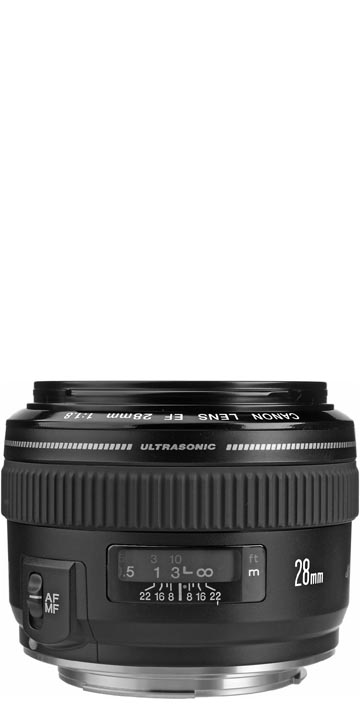 WIDE ANGLE
WIDE ANGLE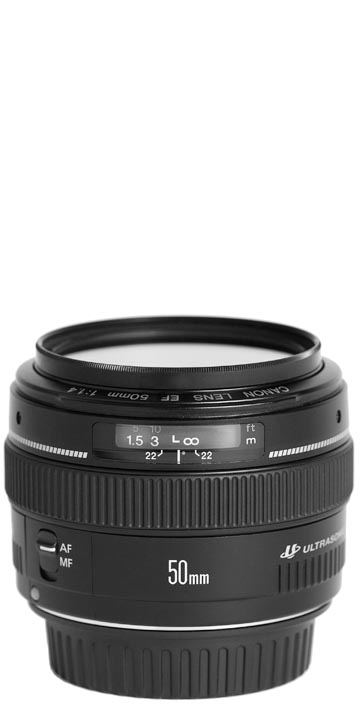 NORMAL
NORMAL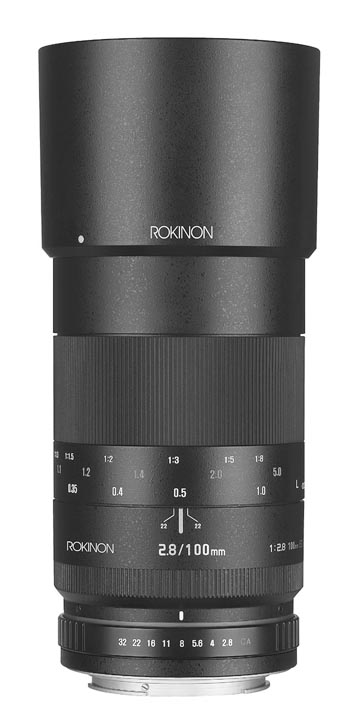 TELEPHOTO
TELEPHOTOHere is a diagram showing focal length. If you can imagine the sensor positioned farther away from the center of the lens ( a longer focal length), the angle of view would be much narrower.
If the focal length was a lot shorter, the angle of view would be much wider and you would see a lot more area around Molly the mannequin's head. In your mind, slide that single lens in the diagram closer to the camera sensor and the black lines would spread farther apart.
Camera Lens comparison
Next we have a camera lens size comparison using 4 different focal lengths. You're probably wondering what the focal length numbers mean on different camera lenses. We're going to cover that in a second, but first check out these photos. These four photographs of a house across the street show you what a dramatic difference focal length has on Composition.
The range in these photos is 8x, going from the 25mm wide angle to the 200mm telephoto. To use different focal lengths you either need to either have a zoom lens on your camera or switch to a different lens if you have a Non-zooming prime lens on your camera.
So, what's the point? Zoom ratio really matters more than any other feature of your lens. Your typical "kit" lens that comes with entry level DSLR cameras are 18-55mm. That's only has a 3x zoom range (55/18). It's adequate for a range of subjects, but not really ideal in terms of its versatility.
The camera lens angle diagram below gives you another way to compare camera lens focal lengths. It shows various angles of view and their corresponding focal lengths.
You can see that the red lines shows you a very wide angle of view at 17mm which would be great for including a lot of scenery in our photo. Your lens set that at a telephoto focal length of 200mm, the yellow lines, you'd have a much narrower angle of view. That would be great for magnifying distant objects and bringing them closer.
Camera lens focal lengths
A word of caution: The actual focal length numbers are different for different camera sensor sizes. Check out the comparisons below. For a normal (35mm film camera) or a full-frame DSLR, the 50mm lens is considered standard. That comes close to matching our human view on the world.
For an entry level DSLR and its smaller sensor, you get the same "normal" view with a 32mm lens. With a compact point and shoot, with a once inch sensor, you'd get a normal view with a 19mm lens.

What's the point? The zoom ratio is what matters most and whether your camera lens zooms through a wide angle range, a normal range, a telephoto range, or even a combination of more than one.
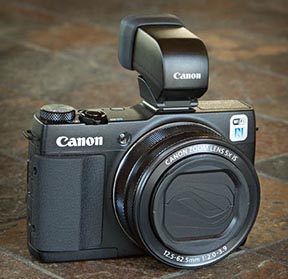 5x Zoom
5x ZoomHere's an example. I have an advanced Canon PowerShot with a 5x zoom lens. It's focal length range actually goes from 12.5 - 62.5mm, which is equivalent to a 24-120mm zoom on a full-frame sensor camera.
That's a good range of wide angle to narrow angle-telephoto that will handle a wide range of shooting situations for you.
At this point you realize how confusing the numbers can be. Read the next section to get a better grasp on what really matters when you're shooting.
what the basic lens focal length ranges are used for
WIDE ANGLE
Landscapes, groups of people, architecture, small spaces. When you want to enhance or exaggerate perspective. When you want a lot of depth of field.
NORMAL
Everyday snapshots, normal perspectives, creating a natural viewpoint. The "normal" view is a very similar view and perspective that we humans get with our eyes.
TELEPHOTO
Bringing the subject closer, sports, wildlife and bird photography, portraits of individuals, reducing perspective, filling the frame, shallow depth of field.
You can get zoom lenses in a variety of different focal length ranges:
- You can get wide-angle zoom lenses that cover a super wide to moderately wide view.
- You can get regular zoom lenses that cover moderately wide, though normal and medium telephoto angles.
- You can get telephoto zoom lenses that cover moderate telephoto to strong telephoto (very narrow) angles of view.
- You can even get lenses that go from very wide to very strong telephoto, but they usually don't have a real wide aperture and often have some pincushion or barrel distortions.
DON'T DO THE DIGITAL ZOOM CAMERA LENS COMPARISON
Digital zoom is not your lens' focal length zoom. It's really just a feature built into your camera's software that uses only part of your photo.
It's a joke. It's nothing more than cropping and using only part of your camera's sensor. Using only part of your camera's sensor mean you get less image quality.
Always take note of "optical-zoom" when considering the different features of a camera
2. LENS CATEGORIES BY USE
This might be the most useful way to understand different camera lens types, but also can be a little deceiving because of overlapping uses. There is a wide gamut of lens use for specific situations. Portrait lenses, bird lenses, landscape lenses, wedding lenses, macro lenses, and sports lenses are just a few.
Just like a lumberjack could use a variety of wood cutting tools to chop down a tree, certain tools would do a much better job than others. The same is true for camera lenses for photographers.
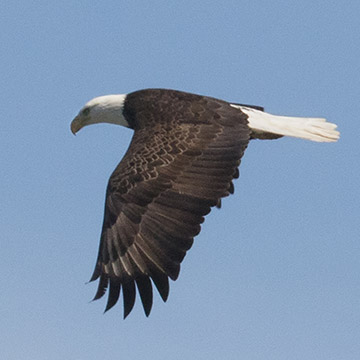 Bird & Wildlife Lens
Bird & Wildlife Lens(600mm Lens)
The best bird lenses are long and are capable of photographing birds and other wildlife at great distances.
With backyard birds at your feeder, you don't need as much power because these birds are accustomed to humans and you can get close enough if you remain still and patient.
With birds in flight, a camera that has sophisticated autofocus and fast frames per second shooting really helps. More on Bird Lenses.
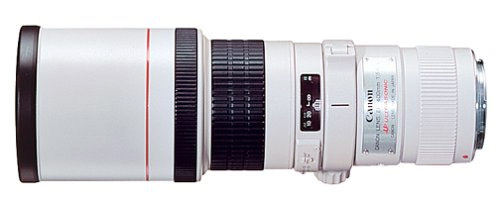
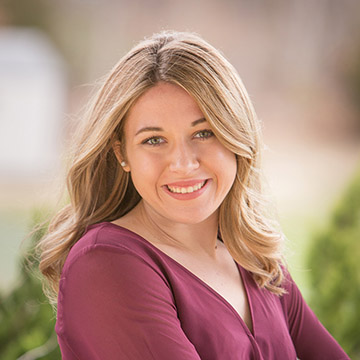 Best Portrait Lens
Best Portrait Lens(70-200mm f/2.8)
Medium and longer telephoto lens give you the most pleasing perspective for shooting head shots and small group portraits.
The best portrait lens should have a wide maximum aperture (a small number f/stop) like f/4.0, f/2.8, or smaller to get a pleasing out-of-focus background.
Larger group portraits require you use a lens that has wide angle capability.
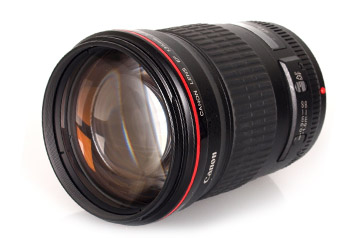
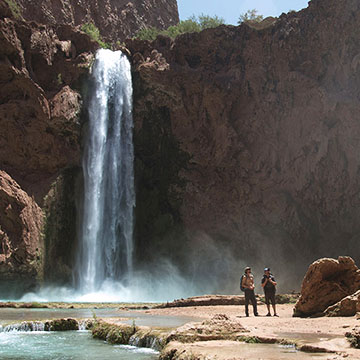 Landscape Lens
Landscape Lens(Wide Angle)
The best lenses for landscape photography usually have very wide angle settings. Wide angle lenses give you great depth of field, strong perspectives, and the ability to include a lot of scenery in your photo.
Although most landscapes are done with wide angle, you can get some interesting photos with "normal" and telephoto lenses, too.
These longer lenses will visually "compress" subjects and are great to accentuate patterns and textures.
The budget landscape shooter could choose an 18-200mm zoom lens for APS-C cameras. More on Wide Angle Lenses.
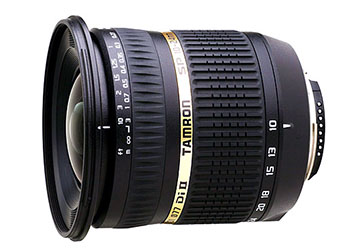
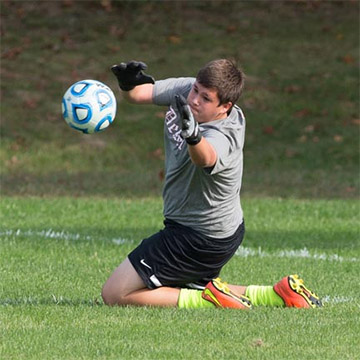 Best Sports Lens
Best Sports Lens(400mm)
Most lenses that are good for sports photography are both long and fast, meaning that have a lot of reaching power and also let a lot of light into your camera.
Most advanced sports shooters use telephoto zoom lenses. The bigger the playing field the more magnification you need. You need to be able to use fast shutter speed to freeze the action.
Fast lenses, bright lighting, and high ISO settings on your camera all will help you get fast shutter speeds.
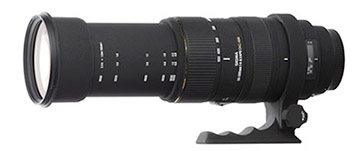
3. CAMERA LENS TYPES BY DESIGN
This is the most irrelevant section of this camera lens basics post and the least likely you'll have any use for. You can skip over this section too unless you're really an optics geek. These are the technical differences in design and are way beyond my comprehension and way beyond the need of 99.99 % of photographers need to know.
I just added these camera lens designs to give you an idea of how much technology is put into the making of various optical lenses as well as your average DSLR lens.
CELOR LENS
DOUBLE GAUSS LENS
GAUSS LENS
CHEVALIER LENS
FRAZIER LENS
RETROFOCUS LENS
COOKE TRIPLET
FRESNEL LENS
PETZVAL LENS
PLASMAT LENS
TASSAR LENS
TELEPHOTO LENS
WOLLASTON LENS
This list of lens types supplied by Wikipedia.
camera lens basics: specialty lenses
Fisheye, Macro, Mirror, and Tilt shift lenses are specialty lenses designed for specific situations.
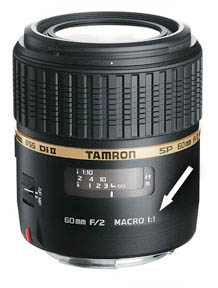
Macro Lens
Macro lenses come in different focal lengths and affect your “working distance.” A longer focal length lens will give a greater working distance than a shorter (wide angle) macro lens will.
Most macro lenses will also focus to infinity, so they can double us to do traditional photos as well..

Fisheye Lens
The ultimate in terms of angle of view. Fisheye lenses give you extremely dramatic perspectives, offering you nearly a 180 degree view from side to side. Fisheye lenses come in two ways, circular and full frame.
There are also a few companies that make a zoom fisheye which will zoom in from a circular fisheye to a full-frame angle of view.
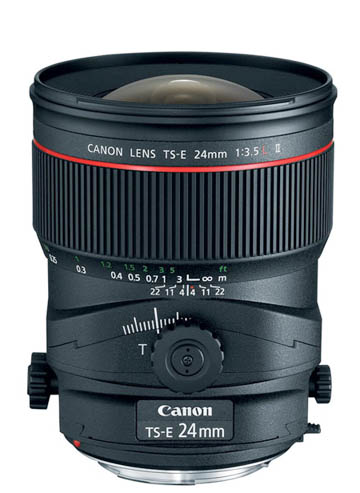
Tilt-shift Lens
Tilt-shift lenses are one of the really unique specialty lenses. They are used by architectural photographers to correct the converging lines produced from tilting lenses upward or downward.
They're also great for controlling the focusing plane and creating really unique images with only selective areas in sharp focus.
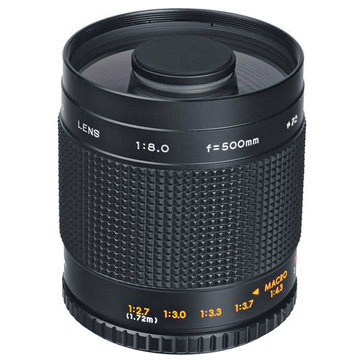
Mirror Lens
Mirror lenses are a very affordable and lightweight way to get involved in wildlife, bird, and sports photography. Mirror lenses were real popular back in the days of film before you could crop your own digital images with software.
They produce ring-shaped highlights, particularly in certain lighting conditions which some people find annoying. You're stuck with a constant aperture, almost always f/6.3 or f/8.0). Fixed aperture means you can't control depth of field and at f/6.3 of f/8 with a long focal length your depth of field is quite narrow.
best bird lens
We covered briefly already, but here is a more extensive look at the best bird lens. It is by far the single most important piece of equipment needed for successful bird photography.
Camera choice is important too, particularly the size of the sensor, but your choice of which lens to use for great bird photography is paramount above all else.
I'll surprisingly suggest to you that the best lens is not always the most technically accurate and sharpest lens. What? Some might immediately say that doesn't make sense. Let me explain.
I chose to sell my Canon 400mm prime lens get a new Tamron 150-600mm and I've got mixed feelings. Here's my personal Tamron 150-600mm Review. The Tamron 150-600 is more versatile and more powerful than a non-zooming 400mm prime lens. My Canon 400mm prime was incredibly sharp, definitely sharper than the Tamron.
I am not a big fan of getting too obsessed with technical lens tests measuring chromatic aberrations, contrast measurements and color accuracy tests, but I do like sharp images. It is quite simple to test your lens for chromatic aberrations.
After all, photography is subjective and most photographers want good equipment at a reasonable price that produces great photography. Besides that, it is questionable if those minute, scientifically-measured, differences that show up in side by side lens tests translate to better bird photographs.
In today's world of digital photography and the simple and sophisticated ways of sharpening images post capture, editing and retouching techniques have lessened the gap between high-end lens companies and third party lens makers.
WHAT'S the BEST MAGNIFICATION FOR YOUR BIRD LENS?
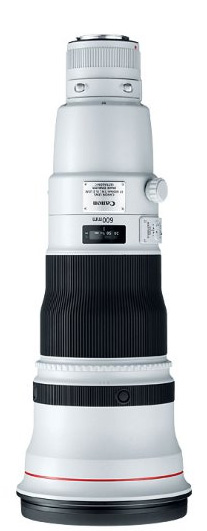 Canon 400mm f/4 Bird Lens
Canon 400mm f/4 Bird LensBirds are small and usually a bit too shy to get close to without some serious help from a powerful lens. There certainly is not one sure-fire answer to this question. There are couple of considerations to examine to get you to the answer you are seeking. Generally lenses in the 200-800mm range are considered good for bird photography.
The 200-300mm range is appropriate for your backyard and trips to the zoo or bird sanctuary. That's where you can use a little ingenuity and get close enough to photograph your feathered friends.
Lenses that are in the 400-600mm range are considered true bird lenses and there are many choices available in this range.
Then the range of 800-1000mm lenses are the large and heavy lenses, where transporting the lens is a serious undertaking. These are often referred to as super-telephoto and are left for professionals and those of you who have the financial resources to splurge.
MAXIMUM APERTURE FOR YOUR BIRD LENS
Most lenses produce their sharpest when they are stopped down 2 or 3 f-stops from their maximum aperture, although the "pro" level, prime lenses are remarkably sharp at their widest apertures.
Birds in flight require super-fast shutter speeds and put a premium on being able to shoot with a large aperture to capture the motion sharply, without resorting to super high ISO ranges to get the right exposure with such short exposures.
If you can afford them, having the f 2 and 2.8 bird lenses give you the option to shoot wide-open or stopped down a few f-stops. Slower lenses can be limiting in practical use when photographing birds in lower light conditions. For the best image quality, always keep your lens clean.
best lens for wildlife
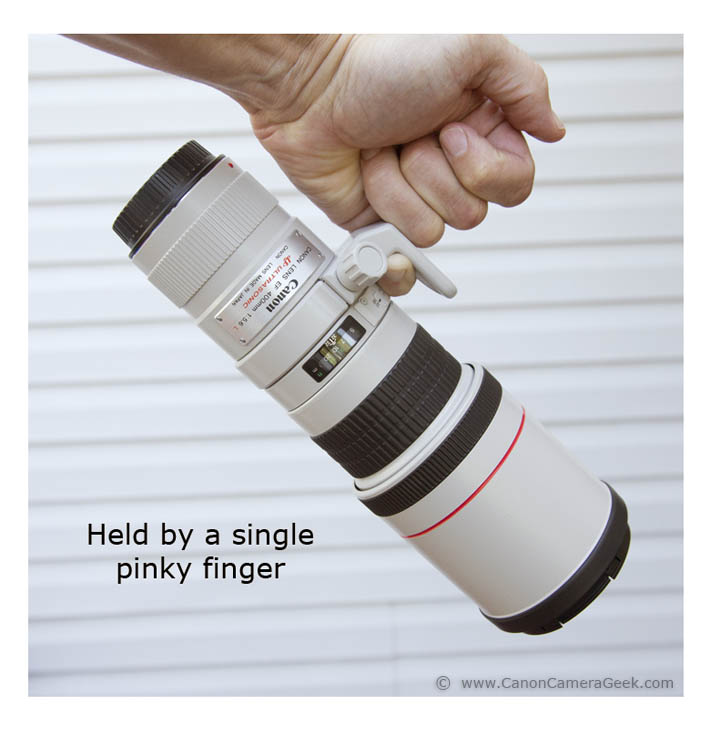 Wildlife Camera Lens
Wildlife Camera LensYou want the best wildlife lens and you don't have an unlimited budget. Neither do I!
Instead of the Good, the Bad, and the Ugly, I am going to give you the good, the better, and the best lens for wildlife photography. There are a lot of directions you can take, but this is where you have to start. First, consider the characteristics you need to look for when choosing the best lens for your situation.
4 REQUIRED CHARACTERISTICS OF THE BEST WILDLIFE LENS
1. DISTANCE
Some wildlife will completely ignore the presence of a human. Other creatures will bolt away at the hint of your existence. If you want to capture those shy animals, you need length. The longer lens, the more chance you have of getting that great photo.
There are also situations where your safety is an issue. For your own well-being you've got to keep a safe distance from predatory wildlife. If you are photographing wildlife at your local zoo, a zoom lens with a 70-200mm range will do a GOOD job for you.
2. POWER
Enough magnification to be able to nearly fill your frame with your subject. The type of wildlife you want to photograph matters too. There are 47,000.000 "birders" in this country according to the US Government Fish and Wildlife Service. Unless you're photographing the common backyard birds at your feeder, you need serious power to capture birds and fill your camera frame.
A 400mm lens on a full frame camera will give you roughly the same magnification as an 8x pair of binoculars.
I've never heard any of my bird photography friends complain that their lens was too powerful for bird photography.
I got a photographer's pass to shoot a local rodeo this summer and my 400mm Canon was actually too powerful to fit the rodeo animals in the frame. I wasn't shooting wildlife per se, but it was a similar situation and a 70-200mm lens was just about perfect. I had to crop my images only a little bit afterwards.
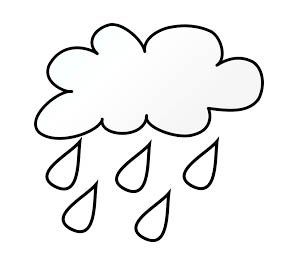
3. WEATHER
Animals don't mind the bad weather, but you need to be able to handle it and so does your lens and the rest of your camera equipment.
Wildlife ignores rain and snow but your lens can't. If you shoot in damp conditions, your camera and lens must be at least water resistant, and you should be prepared to use additional protection if the weather conditions warrant it. The better made cameras and lenses are weather sealed for shooting in adverse conditions. For more on this, here's an article I wrote on my Canon blog about lens weather sealing.
4. SPEED
Much of the population in the animal kingdom tend to be more active early and late in the day. This means that you often have a limited amount of light to work with.
The best wildlife lens needs to be a fast lens with a large maximum aperture. Some of the best wildlife photos are taken with the "sweet light" of the golden hour, near sunrise and sunset, when the lights levels are substantially lower.

5. PRICE
Yeah, I know I said four characteristics, but we can't avoid the price and cost is usually the biggest factor in our decision. Just like a lot of other things in buying decisions, there are two aspects to remember:
- the more you spend the better quality you get.
- if you buy used you can save money, but you have to proceed with a little caution.
If you're the casual hobbyist wildlife photographer you really don't need to spend a ton of cash on a good lens for wildlife photography.
On the other hand, if you're taking a once in a lifetime two-week photo safari to Africa, you're already spending a big chunk of change and a few thousand more on a great lens will mean you're gonna come home with some great photos.
THE GOOD, THE BETTER, AND THE BEST WILDLIFE LENSES
The following lenses are offered by your camera's manufacturer or you can get them from third party lens makers with the right mount for your camera.
GOOD WILDLIFE LENS
A good wildlife lens will be the most affordable and will handle many wildlife-shooting situations. You may have to compromise in terms of speed and power to get a generally good lens for wildlife photography.
As an Amazon affiliate I may receive a small commission from qualifying purchases, at NO added cost to you.
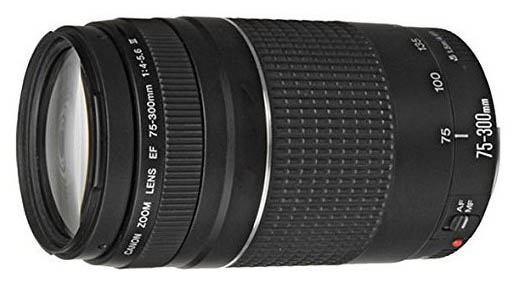 75-300mm Wildlife Lens
75-300mm Wildlife LensIntermediate telephoto zooms fit in this category. Lenses with ranges like 75-300, or 200-400 are popular with photo enthusiasts. I've even used my fast Canon 70-200 f/2.8 as a wildlife lens in some situations. Zoom lenses give you a little more versatility, but you sacrifice at least a little in terms of quality, unless you go with a Canon "L" lens or a Nikon Nikkor lens.
BETTER WILDLIFE LENS
I really like my Tamron 150-600. Here's my full review. It's not real fast at f/5.6-6.3, but it's real affordable at a little less than $1000.With today's high ISO performance DSLRs, you don't need as fast of a lens as you used to.
The Tamron's 4x zoom range gives you the ability to handle a lot of wildlife photography situations. A lot of my fellow photography enthusiasts have a high opinion of this lens too.
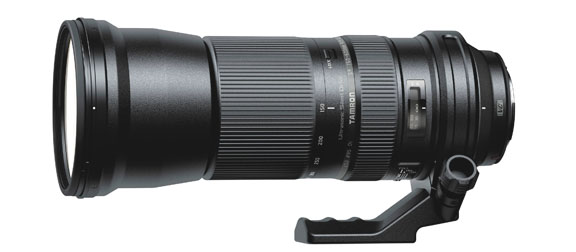 Tamron 150-600mm lens
Tamron 150-600mm lensWith an smaller Canon APS-C or Nikon DX you have the equivalent reach of about a 900mm lens when fully zoomed in. I liked it so much I sold my Canon 400mm prime so I could buy a Tamron 150-600.
For the best optical performance, advanced and professional wildlife photographers prefer to use prime lenses. I include my Canon 400mm f/5.6 in this category of lenses. I love its sharpness, its size and its price.
The Canon 400mm f/5.6 is too slow to be considered on of the best wildlife lenses. You can also include a 300mm f/2.8 in this category of the better wildlife lenses. It's fast as lightning at f/2.8 and very sharp. It's just comes up a little short in power to make it to the best wildlife lens category.
BEST WILDLIFE LENS
The winner in the best wildlife lens is the 600mm f/4. It is tack sharp, it's powerful, and it's fast. The 400mm f/2.8 take second place. Still reasonable magnification for wildlife and fast as lighting.
Both of these lenses can give you amazing wildlife photos. Honorable mention is the Sigma below. The price tag disqualifies me as a potential owner.
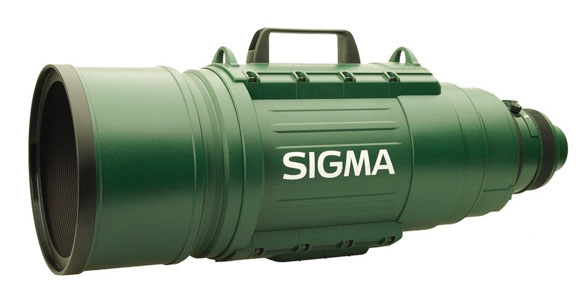 Sigma 200-500 f/2.8
Sigma 200-500 f/2.8The Sigma 200-500 f/2.8 runs a cool $25,000 and weighs in at about 35 lbs. You may have to sell your motorcycle, your stamp collection, and your pinky finger to get one, but it certainly would be a great wildlife lens to use.
CHEAP WILDLIFE LENSES
The lens below is a cheap wildlife lens. It is a manual focus lens and only has a range of f/8-f/16. Lenses like this one are very challenging to use.
If you are shooting a stationary subject in bright sunshine, have a heavy-duty tripod, have great eyesight, and a lot of patience, a lens like the one shown below might work for you.
You can get lenses like this for less than $150.
The biggest advantage to using a mirror lens is handling it. They're very small compared to a traditional lens of the same focal length and they are very affordable. You can get a mirror lens like this for less than $175.
Although it really wasn't a wildlife lens I once bought a cheap sports lens that could have been used for wildlife. It was a 100-300mm zoom lens that I bought new on ebay for about $100.I used it with a Canon 10D which had a crop factor of 1.6x.
The 100-300mm lens had the view of a 160-480mm lens. The photos I got from this were pretty bad. They were not sharp and there was a lot of chromatic aberration. You get what you pay for and you learn from your mistakes.
what is a fast lens
If you've ever heard the term "fast lens" but were curious what it really means, now you'll know. Simply put, it's a lens that can open to a very wide lens opening or aperture. The smaller f-numbers are larger lens openings.
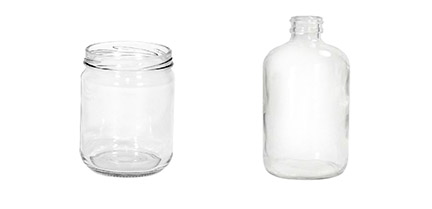 Just like a wider opening would let water fill a jar faster, a wider lens aperture would let enough light into your camera faster.
Just like a wider opening would let water fill a jar faster, a wider lens aperture would let enough light into your camera faster.The big mouth jar could be filled in less time. A larger aperture opening in a camera lens will allow more light to hit your camera sensor. You could use a faster shutter speed and get a good exposure in less time. Lenses can be fast in terms of how fast they focus, but that is more accurately called a fast focusing lens, not just a fast lens.
ADVANTAGES of having a fast camera lens
 1/400 Second
1/400 Second1. Sports and wildlife photos often require a fast shutter speed to "freeze" the action.
Whether it's your kids soccer game or an eagle flying overhead, you need a quick shutter to keep your image tack sharp. If your lens can open up really wide to let more light in then your shutter speed can be that much quicker.
You'll still get a good exposure and the faster shutter speed is great for stopping any blur from your subject or your camera's movement.
2. Low lighting conditions. When the light is limited a big aperture lets you use available light and avoid the harsh light of a flash. Fast lenses are great for shooting indoors without flash and outdoors early in the morning or late in the evening.
3. Pleasing background. Wider apertures give you shallower depth of field. Pleasing out of focus backgrounds are desirable in portrait photography. Fast lenses can give you great bokeh.
The fastest lenses are usually prime lenses. The more complicated optical designs of zoom lens limit the maximum lens opening and zoom lenses are generally "slower lenses."
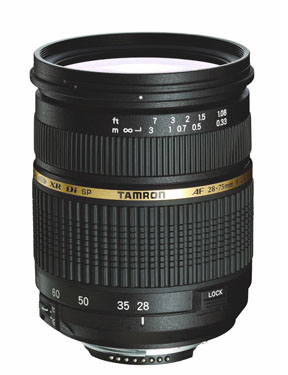 Fast f/2.8 Zoom Lens
Fast f/2.8 Zoom Lens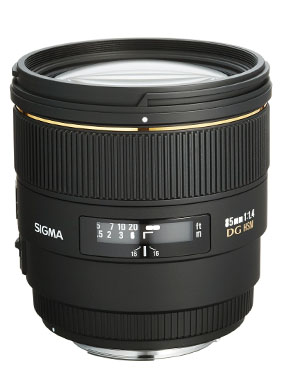 Fast f/1.4 Prime Lens
Fast f/1.4 Prime LensdisADVANTAGES of having a fast camera lens
Faster lenses are bigger and wider. That means the lens elements are bigger and are more expensive to make, so faster lenses empty out your piggy bank faster. With long telephoto lenses that are fast as well, the prices become exorbitant.
With the shorter fast focal length lenses, the fast lenses are a bit heavier. With the longer telephoto lenses that are fast, the size and weight can make carrying them a bit challenging.
WHAT'S THE FASTEST LENS POSSIBLE?
NASA paid lens expert Carl Zeiss to design a super fast lens that could be used to photograph the dark side of the moon. Ten lenses were made. They were quite pricey and their maximum f/stop was f/0.7. That started somewhat of a race in the 1960s and 70s among lens makers to create the world's fast lens.
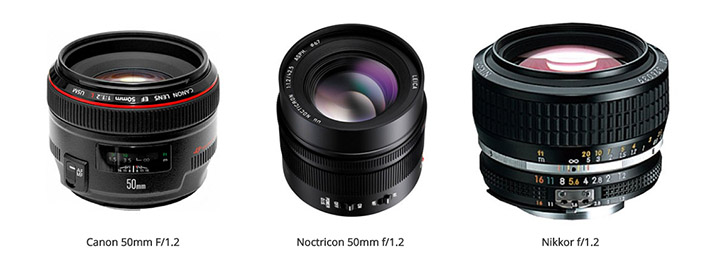
The practical answer for the photo enthusiast like you is that the fastest lenses that are somewhat affordable are normal focal length and have an aperture of f/2.0 or above. These three lenses are of normal focal length but are pricier because of their EXTREME fastness.
what is a kit lens
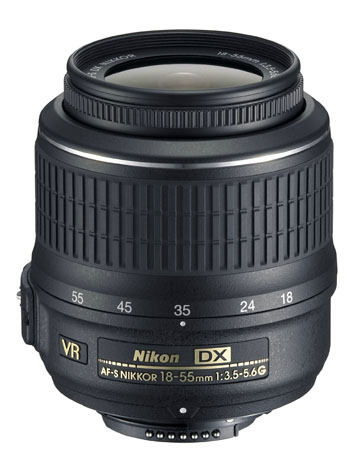 18-55m Kit Lens
18-55m Kit LensKit lenses are the economical general purpose lenses that automatically come with your camera when you buy it. It's very common for camera companies and retailers to offer you a camera and a good starter lens as part of a "kit" when you enter the world of DSLR photography.
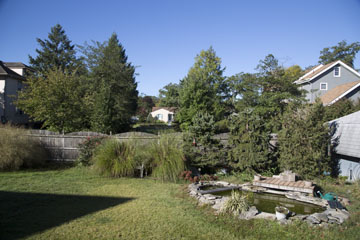 Back yard at
Back yard at18mm kit lens setting
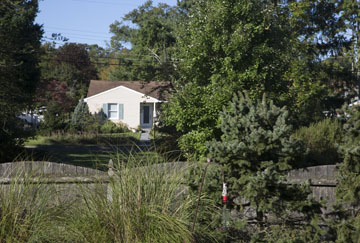 Back yard at
Back yard at55mm kit lens setting
The most popular kit lenses for Canon and Nikon cameras are their basic 18-55mm, f/3.5-f/5.6 lenses and are sold with Canon APS-C and Nikon Dx cameras.
Kit lenses are very affordable and compact, so they're easy to use and perform well. They don't have a large zoom range (only 3x) but that is adequate for the average snapshooter.
Despite that so called "limited" zoom range, you can still get creative with one of these beginner lenses.
Check out the wide angle and up close perspective of this German Shorthaired Pointer.
Kit lenses are also great to keep as a backup lens, in the event you've upgraded your lens situation with a second lens that you'll make your primary lens to use.
what's a good depth of field lens
You might be wondering about what's a good depth of field lens. I've seen a lot of questions from photographers on what lens they should to buy and it's critical to remember one important thing.
You can get good depth of field or shallow depth of field results with the lens you already have.
Here’s the kicker:
It's how you use your lens that matters the most. No matter what lens you use, know that the following three factors affect your depth of field.
1. Focusing Distance. You get the best depth of field when you are photographing more distant objects, rather than close up subjects.
2. Aperture (f/stop-lens opening size). Your lens has small and large lens openings, but, you do need to understand a bit more, at least on a basic level.
- A lens with a very large maximum aperture gives shallower depth of field.
- A lens that has a very small minimum aperture gives larger depth of field.
It is an inverse relationship as you can see in the illustration below. The big lens opening gives you the smaller range of things in focus.
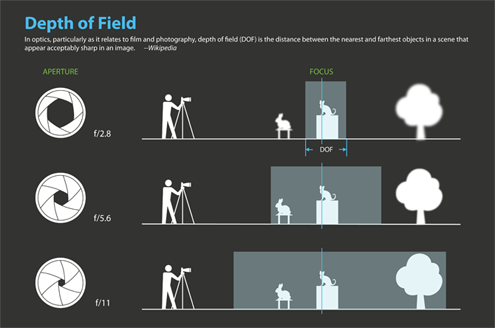 How Aperture Affects Depth of Field With All Camera Lenses
How Aperture Affects Depth of Field With All Camera Lenses3. Focal Length (zoom setting). The third factor is the focal length. Shorter focal lengths (wide angle settings) give you the most depth of field. If you have a zoom lens you'll get the best (deepest) depth of field with it set at its widest angle.
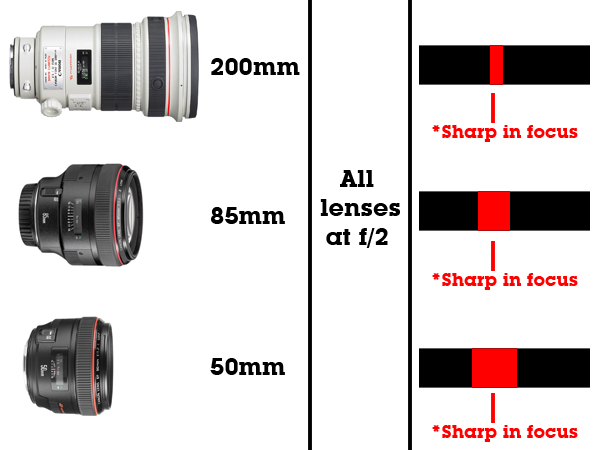 How Focal Length Affects Depth of Field With All Prime and Zooming Lenses
How Focal Length Affects Depth of Field With All Prime and Zooming LensesThis relationship between you focal length and depth of field holds us whether you are using a basic prime lens or a zooming lens.
my own experience with camera lenses
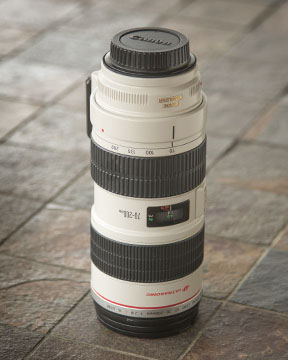 70-200
70-200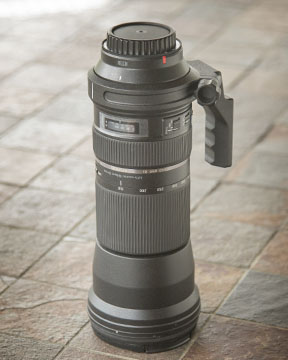 150-600
150-600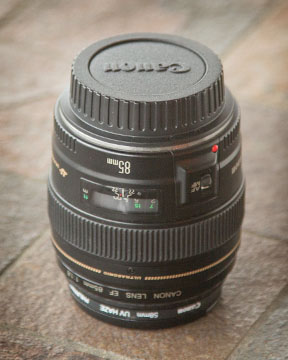 85 Prime
85 Prime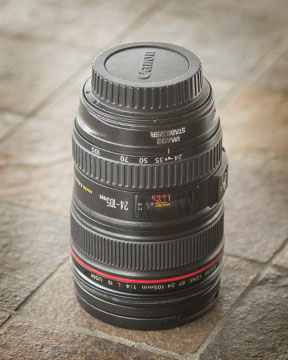 24-105
24-105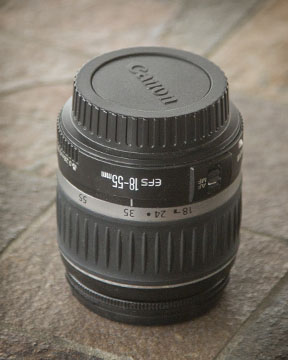 18-55
18-55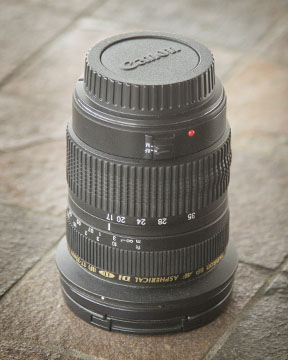 17-35
17-35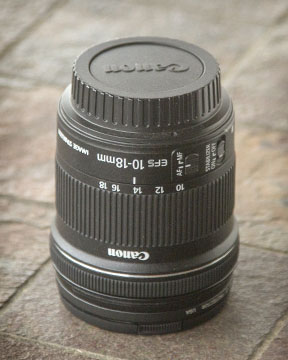 10-18
10-18Back when I was knee-high to a grasshopper. I started with a plastic camera that had a standard plastic lens. Since then my collection has changed many times. I started with 50mm and 100 mm Beseler Topcon lenses with my first DSLR, followed by Minolta 28mm and 50mm lenses, combined with a Quantaray 85-210mm zoom for my Minolta XD-11.
These don't include the Polaroid, Minox, Kodak cameras that came with non-interchangeable lenses. Here's my current list of digital camera lenses.

 Canon 10-18mm f/4.5-5.6
Canon 10-18mm f/4.5-5.6This is a smaller EF-S lens and I use it a lot with my Canon 70D. It's made to fit the smaller APS-C camera bodies, like the Canon 70D.
This 10-18mm zoom has the equivalent view of a 16-28mm zoom on a full-size "35mm" camera. It came in extremely handy shooting the interiors and exteriors of castles in Ireland. This lens is made of plastic and is extremely light.
 Tamron 17-35mm f/2.8-4.0
Tamron 17-35mm f/2.8-4.0When I need to go wider on my full-frame Canon 5D Mark III, wider than my general purpose 24-105 lens, this is the camera lens I turn to.
I chose this over the Canon 17-40 because it was less than half the price of the Canon lens. It was a tough choice because the 17-40 is one of Canon's "L" lenses and you can't beat their performance.
 Canon 24-105mm f/4.0
Canon 24-105mm f/4.0With the exception of shooting head shots and individual portraits, I use this lens on my 5D Mark III more than any other lens in my arsenal. I actually own two of these. One acts as a back-up when I'm shooting sports teams. This is a top of the line Canon "L" lens and has a constant f/4.0 maximum aperture throughout its zoom range.
It's plenty wide enough for most landscape photos, group photos, and overall general use because of it's greater than 4x zoom range, coupled with a fairly fast maximum aperture of f/4.0.
 Canon 18-55mm f/5.6
Canon 18-55mm f/5.6This is the standard kit lens that comes with Canon's APS-C sized cameras. It was donated to me to use for students to borrow in my Basic Digital Photography course.
These camera lenses are the most affordable lenses for beginners in digital photography. They're a little bit limited, with only a 3x zoom range and they don't open up as wide as some of the faster lenses on the market..
 Canon 85mm f/1.8
Canon 85mm f/1.8I don't use this as much as I did before I got my 70-200. It was my favorite portrait lens. You get great bokeh with this lens. It's very light and very affordable.
Now I like to use it combined with extension tubes as my goto macro photography lens. It's sharp as a tack.
 Canon EF 70-200mm f/2.8
Canon EF 70-200mm f/2.8I use this for portraits of individuals and family more than any other lens I have. Sometimes I use it as a second lens when I'm shooting sports when the action is up closer.
It's one of the alltime favorites of Canon shooters and it carries a real high price tag to go along with its high performance.
 Tamron 150-600mm f/5.6-6.3
Tamron 150-600mm f/5.6-6.3This is a very versatile lens for shooting sports, wildlife, and birds. It's not quite as sharp as the Canon 400mm f/5.6 that I sold to get it.
Coming in at under $1000, it's really a great lens for wildlife enthusiasts and soccer moms. It's not the fastest, at f/5.6-6.3, but it's a great choice for you if you're interested in long range photography without spending several thousands of dollars on a super telephoto.
where to buy digital camera lenses

So you've got a good grasp on digital camera lens basics and it's time to buy one. If you've made the decision on the exact type of lens you need and you already own a certain brand of camera, then you just need to search for the best deal on a camera lens. There are too many places that you can buy your camera lens for this author to possibly review, but I'll give you a few of my thoughts.
When I first started shooting professionally on my own, I got a lot of bargains on used equipment on ebay. Saving money was a big issue for me when I was just starting out. I don't know if that's your situation.
If you pick a highly rated seller on ebay and choose a camera lens that you can return if you don't like it, you should make out fine this way.
I think in the several years I purchased camera equipment on ebay, I only had to return one lens that didn't produce sharp images. It only cost me the return shipping charge, so I didn't get burned too bad.
Once I got my business going, I wanted to only use the top equipment and I also wanted to get only new camera gear. I ordered from a huge catalogue published by B+HPhotoVideo out of New York City. I now buy my high end equipment from Adorama.
Adorama specializes in camera equipment. Period. B+HPhoto/video sells a lot of computer electronics, TV and entertainment and is not fully dedicated to digital photography equipment. Most of my more common photography accessories (including some basic camera lenses) from Amazon.
basic lens accessories
Basic camera lens accessories include filters to protect your lens and enhance your photography and lens cases or lens bag to transport and prevent damage to you lenses.
Other worthwhile lens accessories include lens hood, lens caps, lens cleaning cloths, and lens cleaning pens.
You can use the search function in the Amazon box on the right to read consumer reviews on digital camera lenses and lens accessories.
As an Amazon affiliate I may receive a small commission from qualifying purchases, at NO added cost to you.
On Amazon
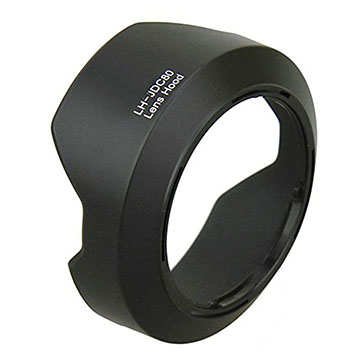
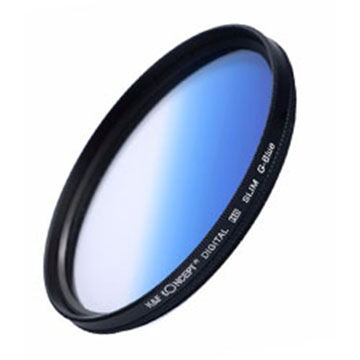
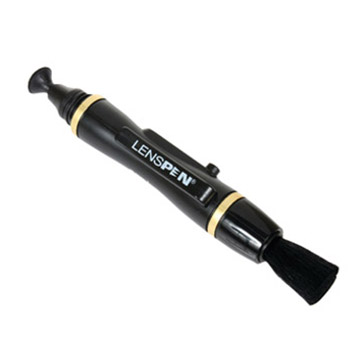
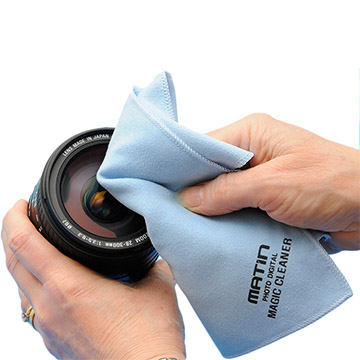
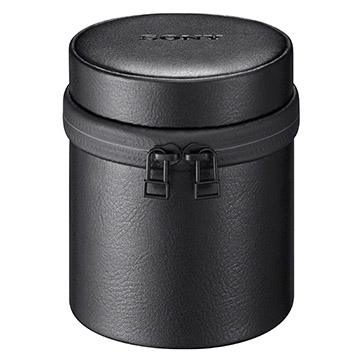
closing thoughts on camera lens basics
This post was all about digital camera lens basics. Please let me know if I missed something you were looking for. You can contact me directly here. Getting a basic understanding of lenses is important. Afterall, every single photograph you create is done through the lens you choose.
articles related to camera lens basics
THIS POST TOOK A LONG TIME FOR ME TO WRITE. IF YOU SHARE IT ON ANT KIND OF SOCIAL MEDIA, LIKE FACEBOOK, PINTEREST, OR TWITTER, IT HELPS ME KEEP THIS SITE GOING
Have a blast with your photography, no matter what digital camera lens you use. Keep shooting, keep learning, and keep improving.


ABOUT BRUCE LOVELACE
Bruce is the publisher of this website. He is the author of the book "Improve Your Photography Instantly." Read more on Bruce on his Bio Page. He's been known as The Traveling Photographer ever since 1994. Read more about this website.
View some of Bruce's photos on Instagram. Visit the Facebook Page. Watch him on YouTube. Bruce runs photo workshops for kids and adults, and provides one-on-one photography coaching.
Digital Photography Education Location on Google My Business
